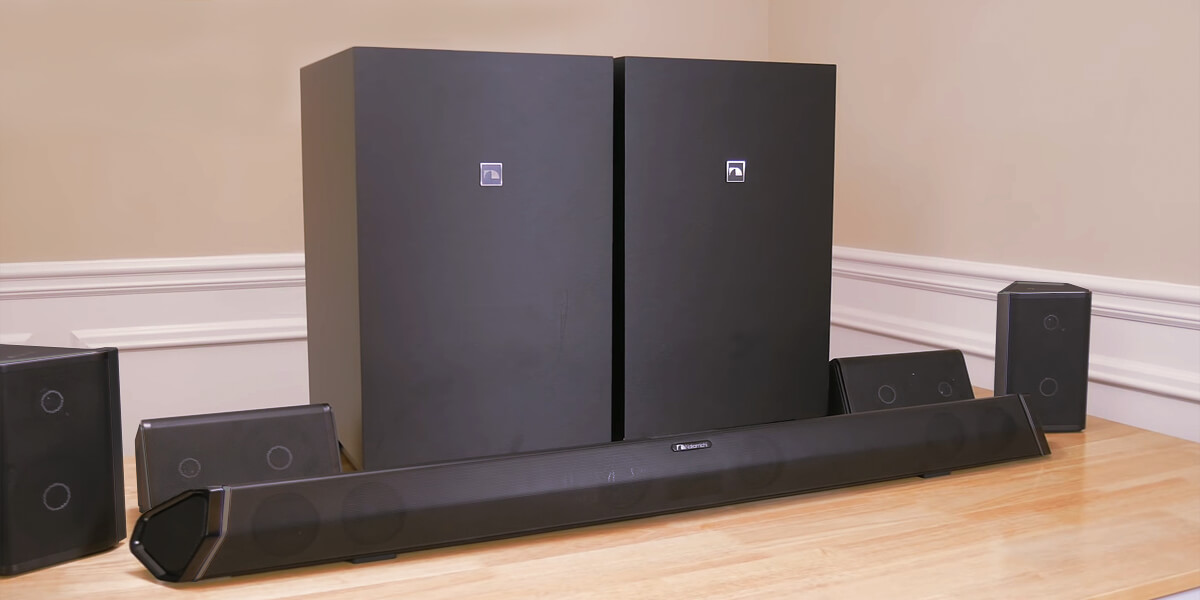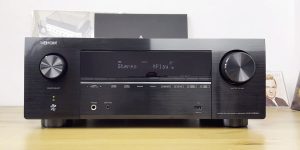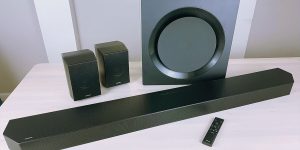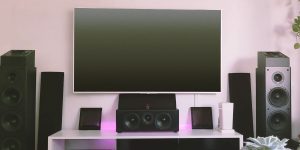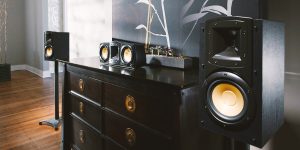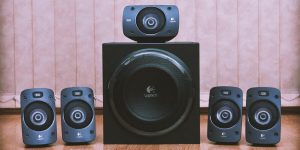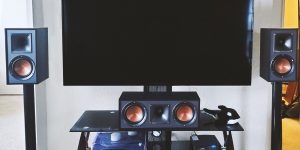Who doesn’t know about the benefits of surround sound today? But many modern users have gone further and want a completely wireless surround sound at home. Well, I have selected the best wireless home theater systems, which present a variety of representatives of this category for all tastes and budgets.
So what do these systems have to offer? Portability, ease of installation and setup, and most importantly, no endless wires. Moreover, such systems are usually equipped with additional features to make your cinematic life even easier. So here we go.
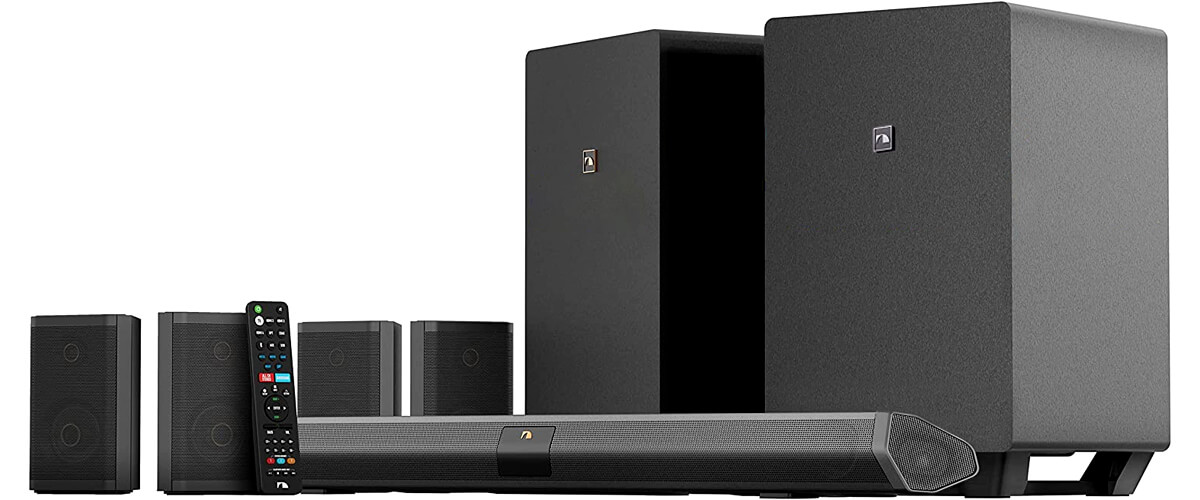
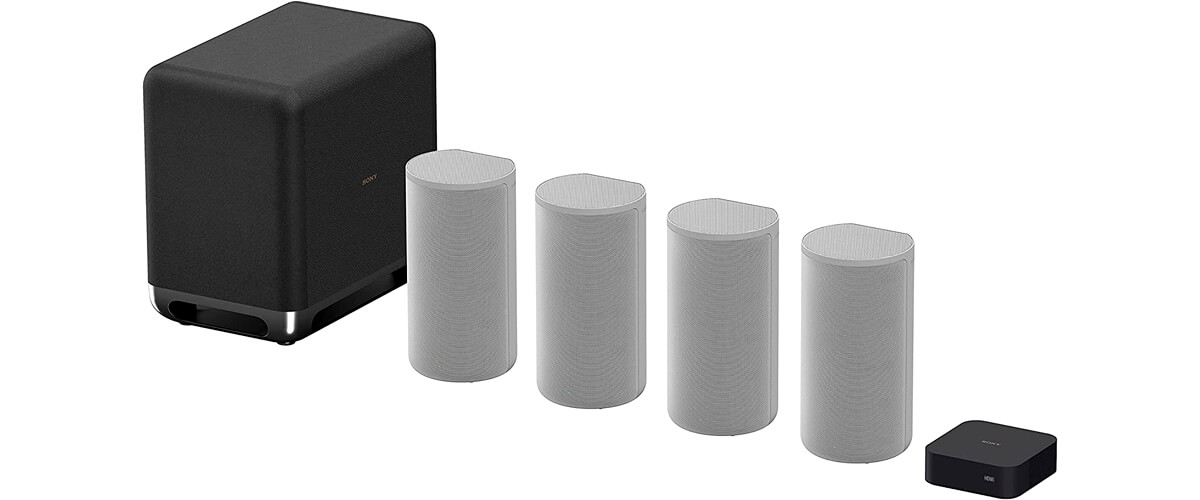
Types of wireless surround sound systems
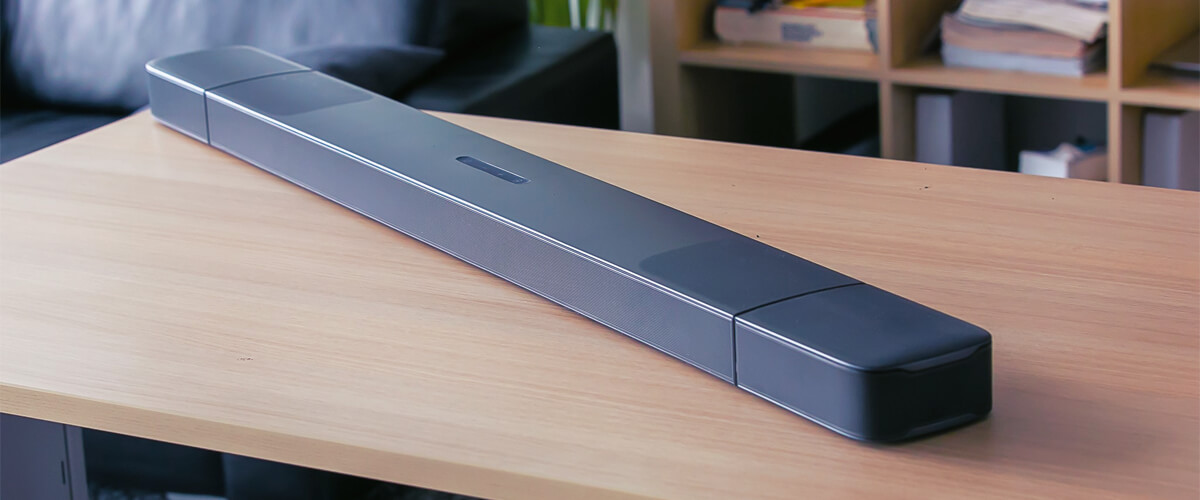
This review presents two types of wireless home theater, each with three participants. Therefore, to begin with, it is worth understanding what these systems are and how they differ.
Soundbar systems
The surround sound system based on the soundbar is the bar itself, which is connected to the TV, and includes wireless rear speakers and subwoofer. The speakers built into the soundbar act as a traditional system’s center and front speakers, saving a lot of space. The absence of wires allows you to move the rest of the speakers as you want across the room. So the advantage of such a system is obvious. Although each component has to be connected to a power supply, they will not be connected to each other.
Home theater speaker kits with a wireless transmitter
Another option for true wireless surround sound is speaker kits with a transmitter. This system does not look much different from the previous one. The main transmitter is connected to a sound source and distributes sound to the speakers in the kit you place around the room. Here, too, each set member is connected to a power source.
Best wireless home theater system reviews
Soundbar systems
Nakamichi Shockwafe Ultra 9.2 SSE MA – best home theater soundbar

The first and coolest in this category, I consider the wireless Atmos system Nakamichi Shockwafe Ultra 9.2 SSE MAX. I will explain why. First, it’s very powerful (1300W) and offers a 9.2.4 configuration, so it easily fills large rooms, unlike many wireless systems designed for small rooms. This is evidenced by the two wireless subwoofers included. It’s full, powerful, and loud!
The soundbar has HDMI ports (3/1 with eARC) and other connectors so that you can watch content in 4K resolution with this system, and it’s also Dolby Vision compatible. And wireless connection to your smartphone or tablet is via Bluetooth version 5.0 with aptX HD. It’s just some kind of miracle, as I always encounter audio lag when pairing, but with the Nakamichi, it worked instantly.
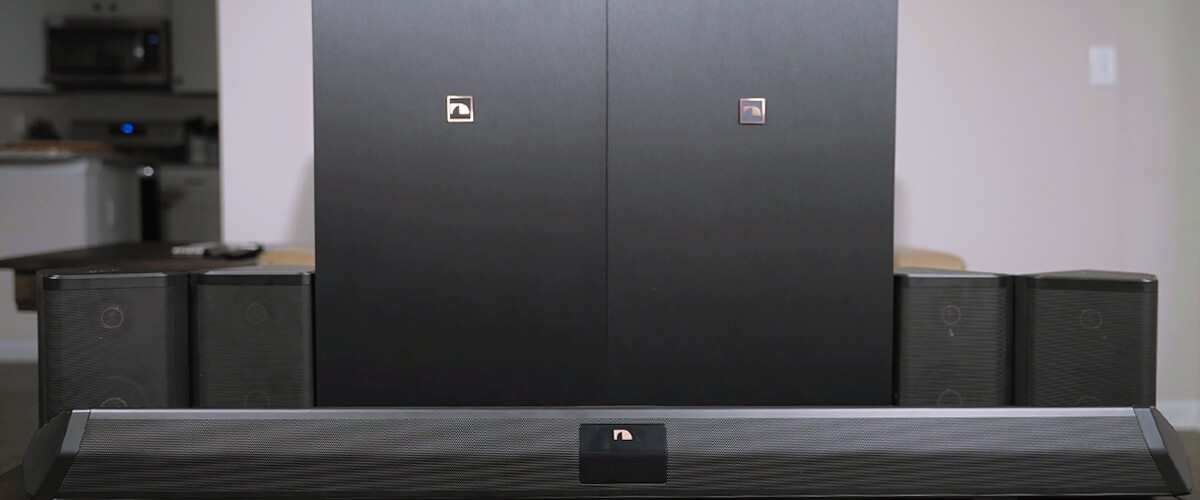
It was all bells and whistles, but I wouldn’t say I liked the incomprehensible menu, which is not reflected on the TV, and you can’t understand anything on the monitor. It’s very small, but even when you look closely, it doesn’t get much better. So, in general, it is a strange thing.
As for the sound picture, it shocked me. In comparison to other wireless systems, it was just a mad bison! Incredible bass with just amazing detail for a wireless system. No matter what I was watching – a Netflix TV show, a Blu-ray movie, a sports show – all the dialogue was crisp, and the soundstage was rich with a wide range. Much better than other systems I’ve heard. True, I did experience an 8-10 second delay in sound when plugged in. I think it’s related to the long signal return time. But after swapping out the HDMIs, the problem disappeared.
The Nakamichi Shockwafe Ultra 9.2 SSE MAX is the best wireless home theater system on my list and generally among the systems I have heard. So if you’re dreaming of a wireless system that can deliver incredible surround sound quality with the detail and power of traditional ones and various connectivity options, my recommendation is a no-brainer.
Nakamichi Shockwafe Ultra 9.2 SSE MAX key specs
- Total number of speakers: 18.
- Speaker channels: 9.2.
- Driver size (subwoofer), inch: 10.
- Connectivity: 3 HDMI inputs, 1 HDMI eARC output, Optical input, Coaxial input, USB Type-A, 3.5mm stereo jack.
- Audio processing: DTS-HD Master, DTS-HD HRA, DTS Digital Surround, DTS:X, DTS Virtual:X, Dolby TrueHD, Dolby Digital Plus, Dolby Atmos.
- Bluetooth/Wi-Fi: yes/yes.
- Frequency response: 20Hz–20kHz.
Pros
- The most powerful one on the list is the 1300W. It can be used in large rooms.
- Excellent bass detail and a wide range of soundstage. Better than other wireless systems.
- Bluetooth version 5.0 with aptX HD showed flawless pairing.
Cons
- The display menu is not shown on the TV screen, and on the LCD, it looks incomprehensible.
- There is a delay in sound when connected.
Vizio M512a-H6 – budget
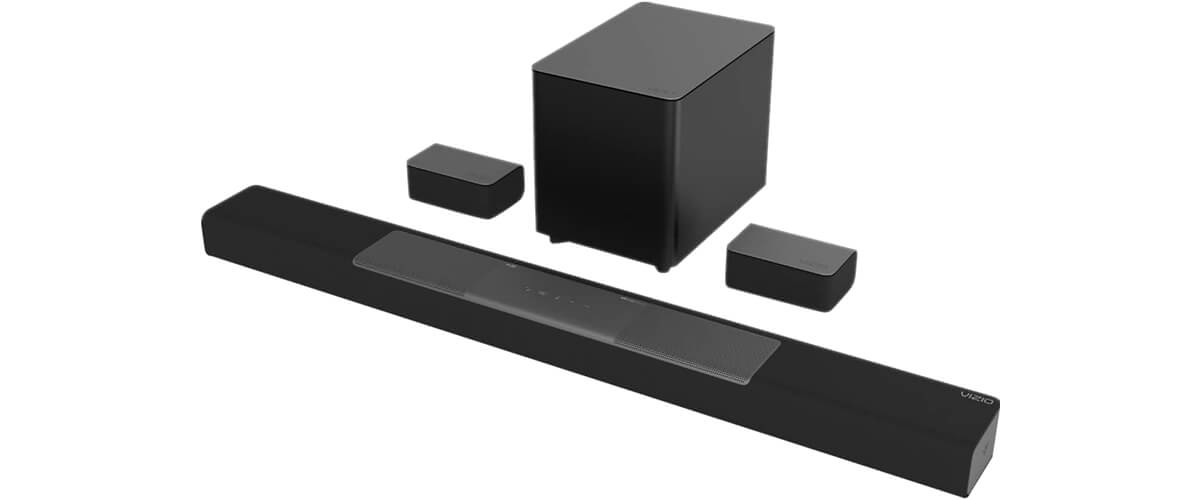
I offer the Vizio M512a-H6 2021 option for those unwilling to pay more. The model was released in 2021 but has won the hearts of fans of systems with soundbars. And I can see why.
The system has a low profile bar, a 6″ sub, and two miniature rear satellites, making it portable. It’s especially true of the sounder, which easily fits under the TV. But a special feature is that the woofer, tweeter, and special boost speakers are separated. This design gives the Dolby Atmos a sound completely different from any digital system I’ve heard. As a result, the quality is several notches higher. Also available in the 5.1.2 configuration are DTS:X and DTS Virtual:X. Bravo, Vizio!
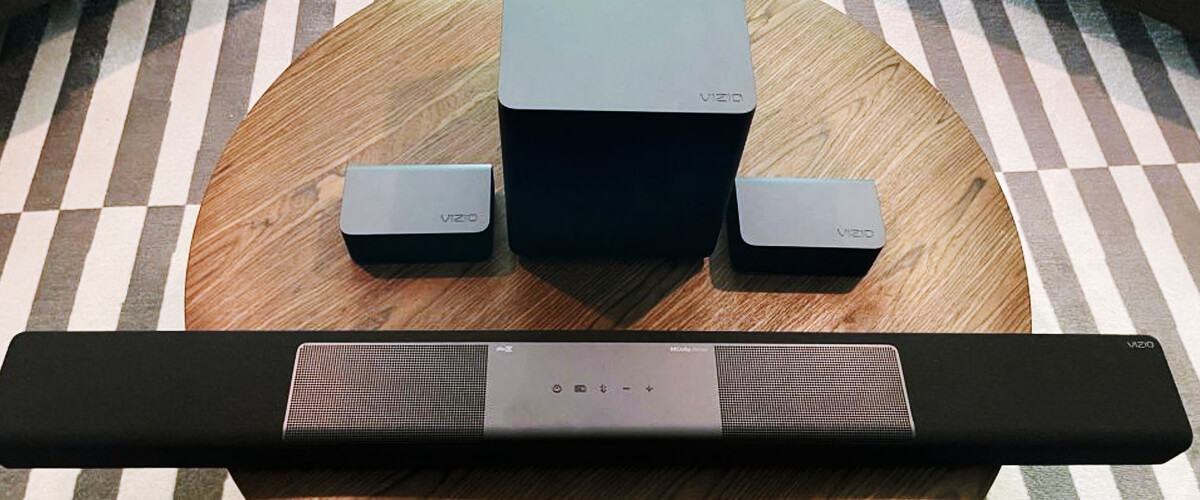
With this baby, you can use HDMI (eARC), connect older equipment, or listen to music via Bluetooth, although it’s a bit slow when connected. There’s even an analog 3.5mm stereo mini jack, USB (WAV), and an input for the voice assistant.
I’ve already noted the system’s excellent sound for such a system, but the HDMI eARC performance is also worth highlighting separately. It comes with a cable; with it, the signal transfer is far superior to other options I’ve come across in this category. The sound is crisp, enveloping (but only in a small room, as the Vizio is not as powerful as the Nakamichi), realistic, and filled with detail. I noticed a 5-second sound delay when using the Dolby Atmos, but I could eliminate it in the settings.
If you’re looking for the best wireless sound system among budget options, the Vizio M512a-H6 is a great gift for you, your ears, and your wallet. It’s a pretty functional soundbar with great sound that makes it stand out among digital systems.
Vizio M512a-H6 key specs
- Total number of speakers: 11.
- Speaker channels: 5.1.2.
- Driver size (subwoofer), inch: 6.
- Connectivity: 1 HDMI input, 1 HDMI eARC output, Optical input, USB, 3.5mm stereo jack.
- Audio processing: DTS:X, DTS Virtual:X, Dolby Atmos.
- Bluetooth/Wi-Fi: yes/no.
- Frequency response: 45Hz–20kHz.
Pros
- A low-profile soundbar that fits comfortably under the TV.
- Separate speakers are better at reproducing Dolby Atmos sound than any digital speakers.
- Excellent HDMI eARC signal transfer.
Cons
- There was a 5-second sound delay when watching content with surround sound.
- Delayed Bluetooth connection.
JBL Bar 9.1
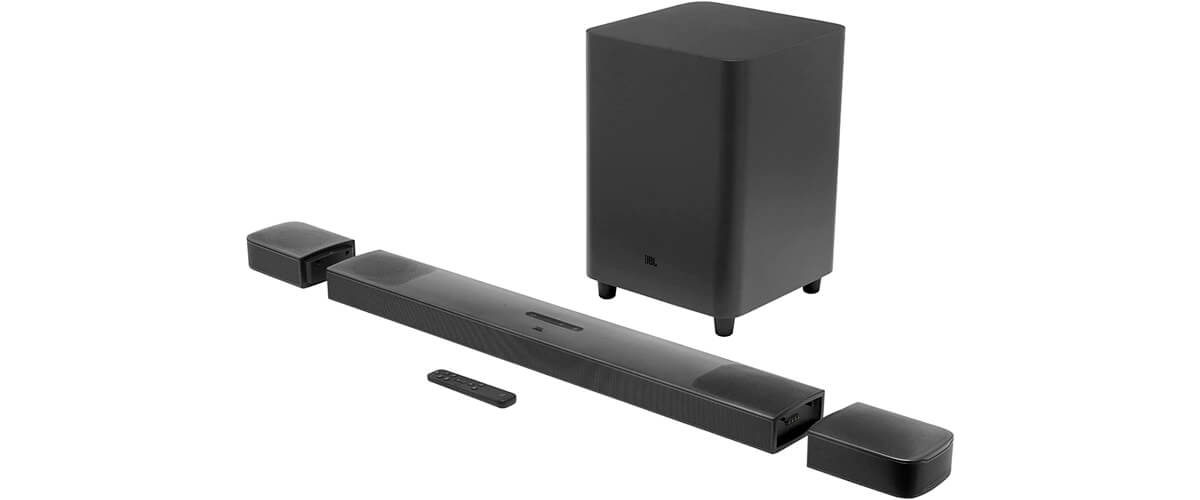
A great selection I got, I must say. Last in this category is the JBL Bar 9.1 2020. It may not be as powerful as the Nakamichi, but it has its advantages in the form of satellites with built-in batteries. You can place them wherever you want in the room, and they’ll run for 10 hours. And to recharge them, you have to plug them into the sides of the soundbar for just 3 hours! Plus, the system has a 10″ wireless subwoofer.
Of the connections, the sub has HDMI input (HDCP 2.3) and output (eARC) for Dolby Vision 4K, USB playback, and an optical input. But what sets it apart from the Vizio is the built-in Chromecast and AirPlay2. In addition, I like controlling the system with the Harmony remote, and it came out just fine.
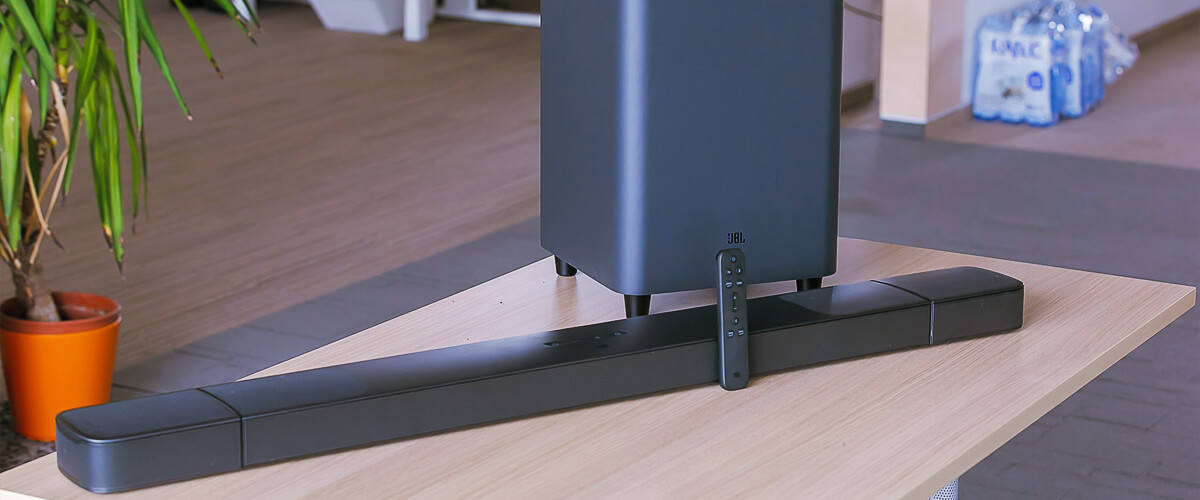
Regarding the sound, I would say that True Wireless is a really good product. I had no problems; the surround sound fills a small room well in a 5.1.4 surround sound and broadcasts Dolby Atmos very well (820W system power). I liked the subwoofer performance, and I think this one sub is better than the two 8″ subs from the Nakamichi. But the center channel is weak, and in some places, the dialog is lost in the background of the overall sound picture. Again, not critical, but I had to boost the sound.
I can conclude that JBL Bar 9.1 fully wireless surround sound is an excellent system for those who really want to get rid of wires and want to appreciate the potential of Dolby Atmos and DTS:X. This device appreciates the bass and loves streaming music. The price range of the system allows for some compromises, fortunately not critical.
JBL Bar 9.1 key specs
- Total number of speakers: 9.
- Speaker channels: 5.1.4.
- Driver size (subwoofer), inch: 10.
- Connectivity: 1 HDMI input, 1 HDMI eARC output, 1 Optical input, USB Type-A.
- Audio processing: DTS:X, Dolby Atmos.
- Bluetooth/Wi-Fi: yes/yes.
- Frequency response: 34Hz–20kHz.
Pros
- I like that the satellites are wireless and can be charged from the bar. The competitors don’t have that option.
- True Wireless is a good product, it works great, and I haven’t had any problems with it.
- One 10″ sub was better than two 8″ Nakamichi subs.
Cons
- The center channel doesn’t always handle quiet dialogs.
Home theater speaker kits
Sony HT-A9 with Sony SA-SW5 – best home theater speaker kit

So, it’s time to move on to the category of wireless home systems with a transmitter. And first up is the most compact of the three on my list, the Sony HT-A9 with Sony SA-SW5. And the most expensive.
The transmitter has HDMI input (HDCP 2.2, CEC) and eARC output, and it supports HDR and Dolby Vision at 4K/120Hz. There’s also Wi-Fi and Bluetooth and built-in Chromecast, Spotify Connect, and Apple Airplay 2. Sony is compatible with Google Assistant and Amazon Alexa. I’d say the minimum basic options are fully respected here.
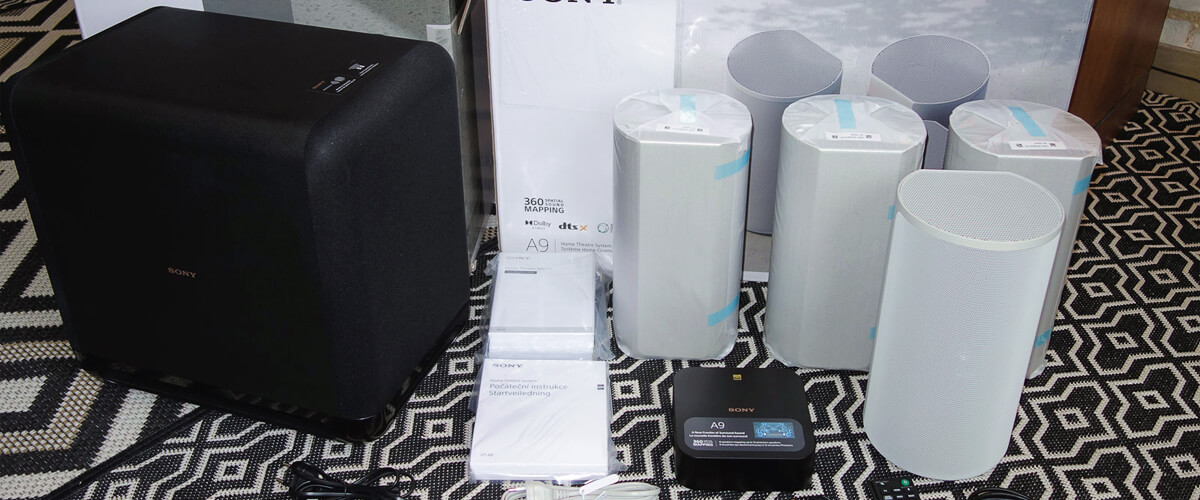
The Sony HT-A9? There are some nuances. I’ll start with the speakers. The surround sound transmission simulates 12 channels in a 4.1 configuration. And each speaker has a rising speaker, a soft dome tweeter, and a woofer. Sony’s advanced 360 Spatial Sound Mapping technology calibrates sound superbly. I also like the Immersive Audio Enhancement feature, which converts normal sound to surround sound and does great with DTS:X, Cinema, or Atmos content. But only if you are centered on the sources. When I moved around the room, I could hear dialogue more clearly from some of the speakers. And there is no manual adjustment. Your job is simply to position the system correctly and be in the center. When listening to the stereo from iTunes, the sound was clear and crisp, but I lacked the bass from the 7″ subwoofer. So the music seemed a little flat.
Sony HT-A9 with Sony SA-SW5 key specs
- Total number of speakers: 7.
- Speaker channels: 7.1.4.
- Driver size (subwoofer), inch: 7.
- Connectivity: 1 HDMI input, 1 HDMI eARC output, 1 Optical input, USB Type-A.
- Audio processing: DTS-HD Master, DTS-HD HRA, DTS Digital Surround, DTS:X, DTS Virtual:X, Dolby TrueHD, Dolby Digital Plus, Dolby Atmos.
- Bluetooth/Wi-Fi: yes/yes.
- Frequency response: 20Hz–20kHz.
All in all, I would recommend the Sony HT-A9 with Sony SA-SW5 to those who are not audiophiles but want to be able to watch content with surround sound with simulated overhead channels. In my analysis, it’s the best wireless sound system for TV and a bright representative of its category.
Pros
- Sony’s advanced 360 Spatial Sound Mapping technology calibrates sound brilliantly.
- Immersive Audio Enhancement perfectly converts normal sound to surround sound.
Cons
- The sound is distributed if you are sitting strictly in the center. Dialogues stand out on the sides.
- The stereo sound is a bit flat, lacking bass.
Bose Premium Home Theater System
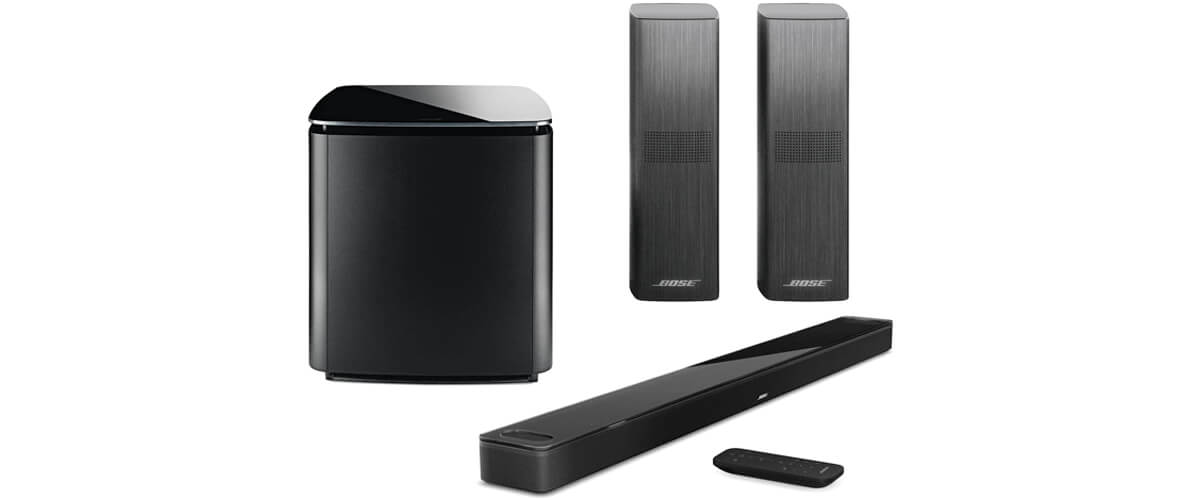
If you are familiar with the Sonos Arc, the Bose Smart Soundbar 900, released in 2022, will remind you of it. Bose, in general, is Sonos’ main competitor, and here their rivalry is an obvious fact, offering almost identical products. Fortunately, Bose also has a huge army of fans, and reviews of this 3.1 system are very high.
So, the Bose Smart Soundbar 900 is the soundbar for Dolby Atmos, as the manufacturer positions it. It’s all about having 9 speakers (a center tweeter, two side tweeters, four race drivers, and two uplink drivers). It also produces multi-channel sound even from non-Atmos encoded content. Of course, it doesn’t compare to a traditional system; you won’t be shaken and turn around for “sounds from behind,” but I liked the smooth sound distribution in the room. The sense of presence is there, and that’s what counts. Also included are the Bose Bass Module 700 and the Surround Speakers 700.
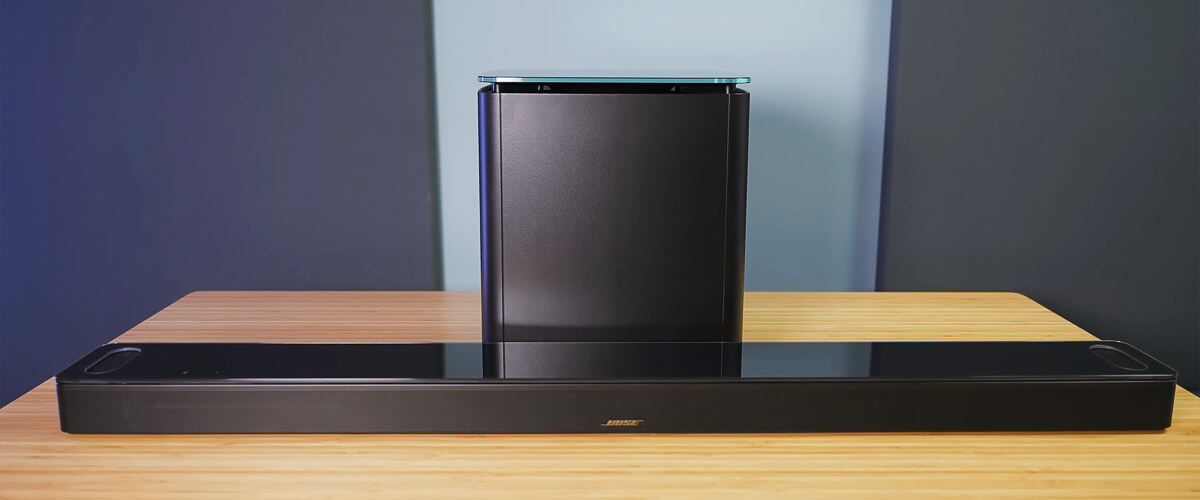
The soundbar has HDMI eARC, but I would pay attention to the wireless capabilities. In addition to Wi-Fi, which allows you to listen to any streaming music (Spotify Connect and Apple AirPlay2), use voice assistants (including Voice4Video’s own voice control, which, by the way, works great), and the system has two-way streaming via Bluetooth. This is great for those who like headphones. However, the rare drops when transferring music via Bluetooth are worth noting. Admittedly, it took some fiddling until I realized that the indicators on the information panel only blink when controlling from the remote or putting the system in MUTE mode.
This system will suit those who want Bluetooth surround sound at home, streaming audio from streaming services, and voice control. The sound of the Bose Premium Home Theater System is balanced, with proper sound distribution and accents.
Bose Premium Home Theater System key specs
- Total number of speakers: 13.
- Speaker channels: 9.1.2.
- Driver size (subwoofer), inch: 7.
- Connectivity: 1 HDMI input, 1 HDMI eARC output, 1 Optical input, Ethernet port, USB Type-A, ADAPTiQ input.
- Audio processing: Dolby Digital, Dolby TrueHD, Dolby Digital Plus, Dolby Atmos.
- Bluetooth/Wi-Fi: yes/no.
- Frequency response: 34Hz–20kHz.
Pros
- Multi-channel sound, even from content not encoded in Dolby Atmos.
- Loved the Voice4Video Technology work for voice control of the system.
- Two-way streaming via Bluetooth is something other systems don’t have.
Cons
- There is no information panel on the unit, and the lights blink or light up only when controlling from the remote or putting the system in MUTE mode.
- Rare drops when transferring music via Bluetooth.
Enclave CineHome PRO
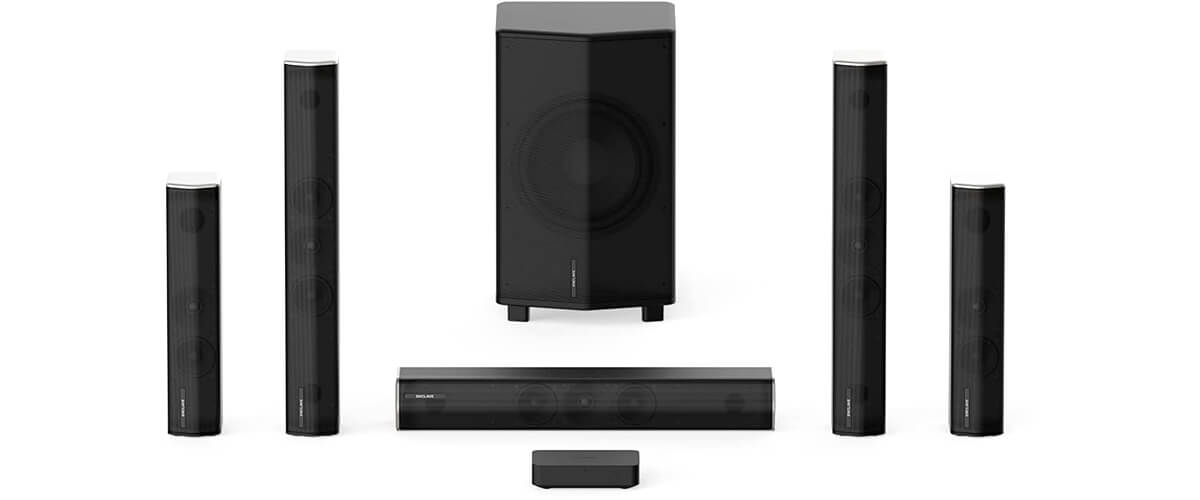
This system is cheaper than the two presented above but ranks high in user reviews. Enclave is a wireless 5.1 home theater system with a hub, 5 speakers, and a 10″ subwoofer. It also has 11 perfectly tuned Class D amplifiers and 14 specially designed speakers.
Connectivity options are inferior to their predecessors and offer HDMI ARC, optical digital, or 3.5mm mini-jack inputs. There is Bluetooth, but there is no talk of AirPlay or Chromecast. I haven’t noticed a single Bluetooth drop, though. Great pairing.
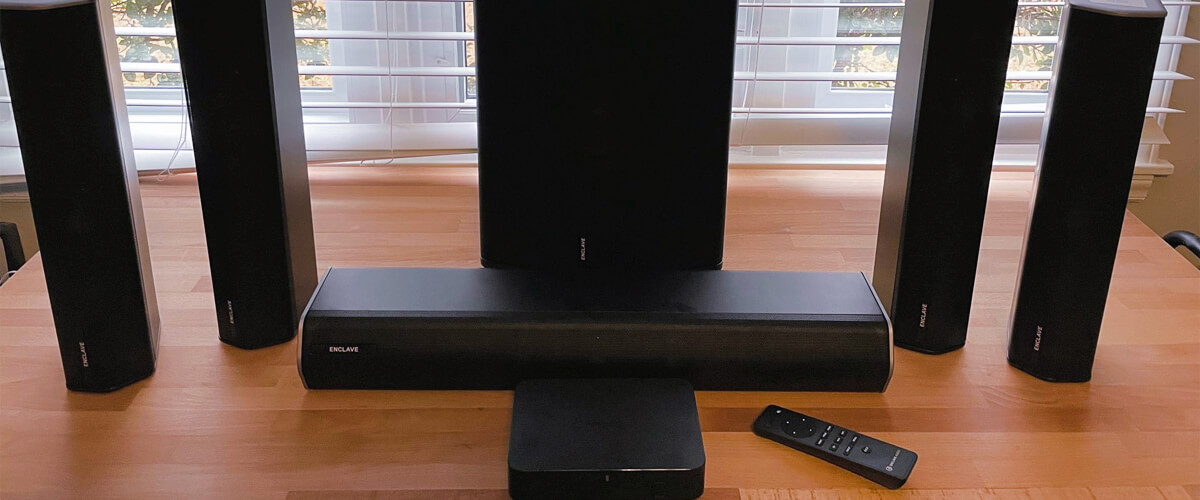
Before we start talking about the sound of the Enclave CineHome PRO, it is worth noting the unusually narrow and rather large speakers. It would help if you looked into it, believe me. For example, you can’t mount them flush to the wall because the reset button and power cord are on the back wall. And that seems extremely inconvenient to me. But they sound (after some tuning, which I had to reset several times) just magical. This is the only system that has THX Certification. That’s saying something, don’t you agree? So, Enclave tuned the crossover filters to match the speakers’ performance almost perfectly. Considering that most people don’t know how to properly tune a system, even if it’s expensive, and remain dissatisfied with the result, I think this was their mega-correct decision. The sound synced perfectly with the image on the screen; I tried several sources. Dolby Atmos also sounded convincing.
The Enclave Audio CineHome PRO is deservedly considered a top-rated wireless home theater system by customer reviews. Of course, it’s bulky, and the speakers need power cords, so it’s more suited to fans of full systems. But its clear and crisp sound in surround sound formats and quality synchronization is worth the highest praise.
Enclave CineHome PRO key specs
- Total number of speakers: 14.
- Speaker channels: 5.1.
- Driver size (subwoofer), inch: 10.
- Connectivity: 1 HDMI input, 1 HDMI eARC output, 1 Optical input, USB Type-A, S/PDIF, TOSLINK, 3.5mm stereo jack.
- Audio processing: DTS-HD Master, DTS Digital Surround, DTS:X, Dolby TrueHD, Dolby Digital Plus, Dolby Pro Logic II, Dolby Atmos.
- Bluetooth/Wi-Fi: yes/no.
- Frequency response: 20Hz–20kHz.
Pros
- The Bluetooth never drops.
- The crossover filters are tuned to the speakers’ characteristics almost perfectly out of the box.
- The sound syncs well with the image on the screen from any source.
Cons
- The speakers are bulky and can’t be flush mounted to the wall.
- The setup app had to be restarted several times.
FAQ
Is there a completely wireless surround sound system?
How does a wireless home theater system work?
Do you need Wi-Fi for wireless speakers?
Is it better to connect by Wi-Fi or Bluetooth?
Bluetooth, on the other hand, is incredibly easy to set up and doesn’t require a separate network. It’s also more versatile, as almost all modern smartphones, tablets, and computers have built-in Bluetooth capabilities. In addition, Bluetooth is often the choice for portable speakers and headphones.

